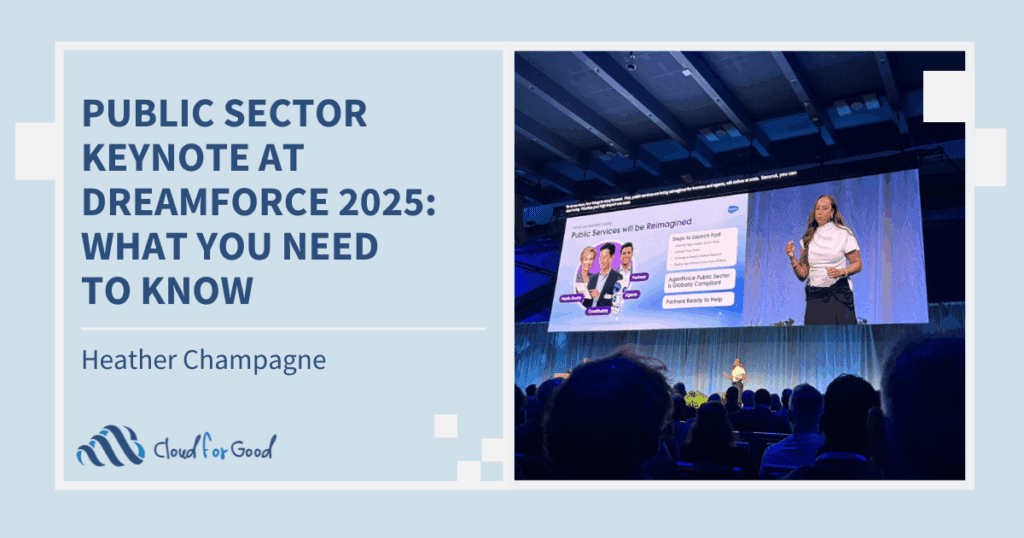In my last post, I discussed naming your instance of Salesforce to help with user adoption and to give your Salesforce instance a personality. Be careful what kind of personality you go with; as you need to remember, you are going to be talking to “him or her” on a daily basis going forward. Yes – I want you to talk to Salesforce. More specifically, you need to talk with your data.
Every day there should be a conversation that happens between you and the data inside of your Salesforce instance. The conversation will vary based on how your day is going and what is going on in the system. If it is the end of the month or quarter, your questions may be focused in a particular area. You might be thinking, “This is not talking to my data. I will just go to run a report to answer the question.” To this, I say, “Not true.” While it is true that the easiest and fastest way to talk to your data is through reporting, it is what you ask after the report is run that is the heart of the conversation, and it is an often missed, critically important step.
What are you trying to tell me?
Sometimes it is hard to start a conversation. My recommendation is to pick a few key questions to ask different areas of your data and let your dialogue evolve organically. When looking at a page in Salesforce and seeing all of the available fields or looking at a report/dashboard, the first question I ask is, “What are you trying to tell me?” The answer could be as simple as, “This is the address for Organization Z” or something more complex: “Here is the difference between the donations received last year vs. this year by donor segment factors Age and Location.” Once you are sure that there is a clear understanding from both you and your data on what is being discussed, you can move on to more questions. I implore you to make sure adequate time is spent on this first question. This is, in my opinion, the area where communication fails most often. Once a system is let out of the box and into the hands of users, it can form a life of its own. It is a wise step to validate the data inputs and the specific criteria/report types you are using to help you converse with your data. By doing this, you can ensure you and your data are starting the conversation from the same place.
Not all conversations are easy
There are times when the conversation may feel more like one with a small child than a world-class enterprise customer success platform. I have asked my data, “When was the last time you had a bath?” If you take the time to ask, you just may find out that you have data that is stale, outdated, or flat-out wrong, and you had no idea because no one asked the question, “How clean are you?” This can be a time-consuming conversation that can go down a rabbit hole of research to determine a strategy to keep all of the facets of your data clean. While that can feel overwhelming, it is imperative that priority be given to someone to lead the charge here. A system with dirty data will not lead your organization to success.
Pass the Laugh Test
There is one other question I ask my data when looking at it. I ask, “Do you pass the laugh test?” I learned early on in my adventures with data that sometimes, even if you ask all of the right questions, something can go awry and the data might not be telling you what you think it is. For this question, you should take a step back look from your data, look at it from different angles, and ask, “Is this possible or does this make sense?” Does it jive that we have a 1,000,000% increase in donations received? Seeing an increase of that magnitude would not pass my laugh test and would warrant a deeper dive to figure out what was going on. If deeper analysis proved that to be the reality, then I would take a moment to do a happy dance, but I would also want to spend the time digging first to see if maybe my report type, summary grouping, or percent formula was off before reporting to anyone we had a million percent increase in donations received. Though an an extreme, if you remember to ask this question, you just might uncover a potential mistake before making a business decision on incorrect information.
Here are some parting words of advice:
- Be a good listener. Your data may be trying to talk to you and you may not be listening.
- Do not assume that you know what your data is trying to tell you. Take the time to explore.
- Sometimes you need to treat your data like a child. When was that last bath?
- Have fun with it! Think of these conversations as mini-adventures into a new world of information.
I would love to hear some of the questions you are asking or are going to ask your Salesforce data.
You may also be interested in these related posts:





